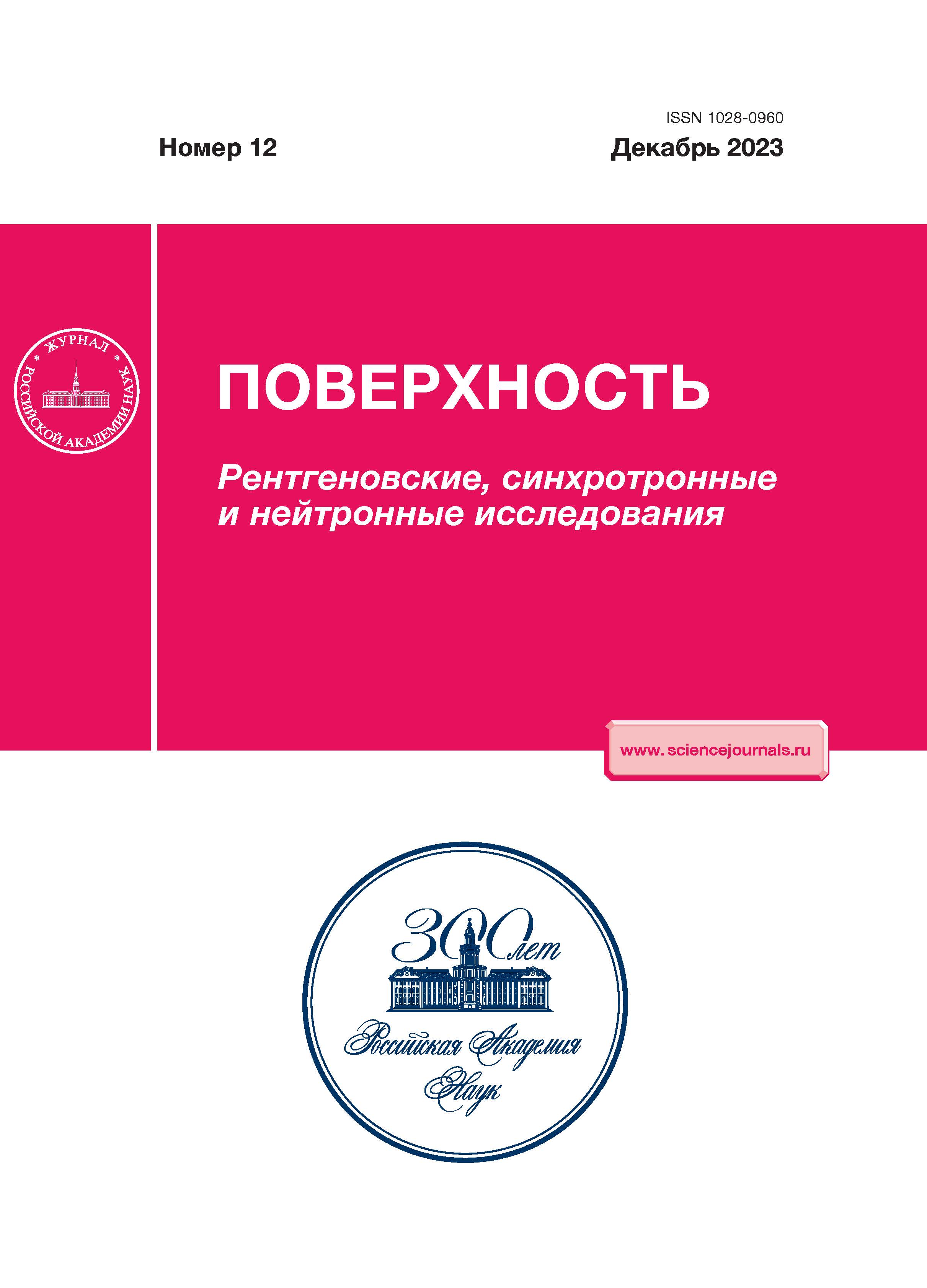Obtaining Magnesium Nanoparticles by Receiving Flow Levitation
- Авторлар: Markov A.N.1, Vorotyntsev I.V.2, Grachev P.P.3, Atlaskin A.A.2, Vorotyntsev V.M.3, Kleiman G.M.1, Barysheva A.V.1, Suvorov S.S.1, Kapinos A.A.1, Vorotyntsev A.V.1
-
Мекемелер:
- Nizhny Novgorod State University N.I. Lobachevsky
- Russian University of Chemical Technology D.I. Mendeleev
- Nizhny Novgorod State Technical University, R.E. Alekseeva
- Шығарылым: № 12 (2023)
- Беттер: 147-152
- Бөлім: Articles
- URL: https://clinpractice.ru/1028-0960/article/view/664711
- DOI: https://doi.org/10.31857/S1028096023100138
- EDN: https://elibrary.ru/PIRZPK
- ID: 664711
Дәйексөз келтіру
Аннотация
Due to the development of the chemical industry, the need to obtain high-purity monodisperse nanoparticles is increasing. Therefore, it is necessary to choose the right method of obtaining. The paper demonstrates a unique method – induction flow levitation, which allows to obtain a large list of metal nanoparticles on one installation. In this work, magnesium nanoparticles were obtained using this method. The morphology was studied using scanning electron microscopy, where the resulting nanoparticles were clusters of primary particles. Energy dispersive analysis showed that the surface of magnesium nanoparticles after interaction with atmospheric air is completely covered with a small layer of oxide. Analysis of the phase composition showed that the powder consists of magnesium without traces of oxide. Mass spectrometry with inductively coupled plasma showed the purity of the obtained particles 99.99%. The characteristics of the porous structure were determined by low temperature porosimetry. The size of the obtained particles did not exceed 40 nm, and the average size was 23 nm. The used method of obtaining nanoparticles demonstrated high productivity (up to 50 g/h) and continuity of the process of obtaining nanoparticles (NP), the ability to control the size of the obtained nanoparticles (NP) in a wide range, non-contact heating, which leads to a high purity of the resulting product confirmed by mass spectrometry with inductive plasma bound.
Негізгі сөздер
Авторлар туралы
A. Markov
Nizhny Novgorod State University N.I. Lobachevsky
Хат алмасуға жауапты Автор.
Email: markov.art.nik@gmail.com
Russia, 603022, Nizhny Novgorod
I. Vorotyntsev
Russian University of Chemical Technology D.I. Mendeleev
Email: markov.art.nik@gmail.com
Russia, 125047, Moscow
P. Grachev
Nizhny Novgorod State Technical University, R.E. Alekseeva
Email: markov.art.nik@gmail.com
Russia, 603950, Nizhny Novgorod
A. Atlaskin
Russian University of Chemical Technology D.I. Mendeleev
Email: markov.art.nik@gmail.com
Russia, 125047, Moscow
V. Vorotyntsev
Nizhny Novgorod State Technical University, R.E. Alekseeva
Email: markov.art.nik@gmail.com
Russia, 603950, Nizhny Novgorod
G. Kleiman
Nizhny Novgorod State University N.I. Lobachevsky
Email: markov.art.nik@gmail.com
Russia, 603022, Nizhny Novgorod
A. Barysheva
Nizhny Novgorod State University N.I. Lobachevsky
Email: markov.art.nik@gmail.com
Russia, 603022, Nizhny Novgorod
S. Suvorov
Nizhny Novgorod State University N.I. Lobachevsky
Email: markov.art.nik@gmail.com
Russia, 603022, Nizhny Novgorod
A. Kapinos
Nizhny Novgorod State University N.I. Lobachevsky
Email: markov.art.nik@gmail.com
Russia, 603022, Nizhny Novgorod
A. Vorotyntsev
Nizhny Novgorod State University N.I. Lobachevsky
Email: markov.art.nik@gmail.com
Russia, 603022, Nizhny Novgorod
Әдебиет тізімі
- Panova T.V., Kovivchak V.S. // J. Surf. Invest.: X-ray, Synchrotron Neutron Tech. 2021. V. 15. № 1. P. 157. https://www.doi.org/10.1134/S102745102202032X
- Zhang X., Yang R., Yang J., Zhao W., Zheng J., Tian W., Li X. // Int. J. Hydrogen Energy. 2011. V. 36. Iss. 8. P. 4967. https://www.doi.org/10.1016/J.IJHYDENE.2010.12.052
- Wagemans R.W.P., van Lenthe J.H., de Jongh P.E., van Dillen A.J., de Jong K.P. // J. Am. Chem. Soc. 2005. V. 127. № 47. P. 16675. https://www.doi.org/10.1021/JA054569H
- Liu Y., Zhu J., Liu Z., Zhu Y., Zhang J., Li L. // Front. Chem. 2020. V. 7. P. 949. https://www.doi.org/10.3389/FCHEM.2019.00949
- KA W., RP V.D. // Rev. Phys. Chem. 2007. V. 58. P. 267. https://www.doi.org/10.1146/ANNUREV.PHYSCHEM. 58.032806.104607
- Biggins J.S., Yazdi S., Ringe E. // Nano Lett. 2018. V. 18 № 6. P. 3752. https://www.doi.org/10.1021/ACS.NANOLETT.8B00955
- Hyeon-Ho Jeong G., Mark A., Peer Fischer // Chem. Commun. 2016. V. 52. № 82. P. 12179. https://www.doi.org/10.1039/C6CC06800F
- Ringe E. // J. Phys. Chem. C. Nanomater. Interfaces. 2020. V. 124. № 29. P. 15665. https://www.doi.org/10.1021/ACS.JPCC.0C03871
- Peng H., Zhu L., Zhang Z. // PP Composites. 2012. V. 11. № 3. P. 231. https://www.doi.org/10.1163/1568554041526558
- Aksenova V.V., Kanunnikova O.M., Burnyshev I.N., Pushkarev B.E., Ladyanov V.I. // J. Surf. Invest.: X-ray, Synchrotron Neutron Tech. 2022. V. 16 № 1. P. 68. https://www.doi.org/10.1134/S1027451022010025
- Mostafa A.M., Okil M., ElFaham M.M., Mostafa A.M., Mostafa A.M. // JOSA B. 2020. V. 37. № 9. P. 2620. https://www.doi.org/10.1364/JOSAB.398543
- Haas I., Gedanken A. // Chem. Commun. 2008. № 15. P. 1795. https://www.doi.org/10.1039/B717670H
- Sergeev G.B. // J. Nanoparticle Res. 2003. V. 5. № 5. P. 529. https://www.doi.org/10.1023/B:NANO.0000006153. 65107.42
- Aurbach D., Lu Z., Schechter Z., Gofer Y., Gizbar H., Turgeman R., Cohen Y., Moshkovich M., Levi E. // Nature. 2000. V. 407 № 6805. P. 724–727. https://www.doi.org/10.1038/35037553
- Kisza A., Kaźmierczak J., Borresen B., Haarberg G.M., Tunold R. // J. Appl. Electrochem. 1993 V. 25 № 10. P. 940. https://www.doi.org/10.1007/BF00241588
- Markov A.N., Vorotyntsev A.V., Kapinos A.A., Petukhov A.N., Pryakhina V.I., Kazarina O.V., Atlaskin A.A., Otvagina K.V., Vorotyntsev V.M., Vorotyntsev I.V. // ACS Sustain. Chem. Eng. 2022. V. 10 № 24. P. 7929. https://www.doi.org/10.1021/ACSSUSCHEMENG. 2C00940
- Zhigach A.N., Leipunsky I.O., Kuskov M.L., Berezkina N.G., Afanasenkova E.S., Safronova O.A., Kudrov B.V., Lopez G.W., Skryleva E.A. // J. Alloys Compd. 2020. V. 819. P. 153054. https://www.doi.org/10.1016/J.JALLCOM.2019.153054
- Aravindan S., Rao P.V., Ponappa K. // J. Magnes. Alloy. 2015. V. 3 № 1. P. 52. https://www.doi.org/10.1016/J.JMA.2014.12.008
- Zheng X.M., Duan X.N., Sun Y.Y., Shang H.J. // Sol. Adv. Mater. Res. 2014. V. 997. P. 312. https://www.doi.org/10.4028/WWW.SCIENTIFIC.NET/ AMR.997.312
- Vassileva E., Furuta N. // J. Anal. Chem. 2001. V. 370. № 1. P. 52. https://www.doi.org/10.1007/S002160100744
- Morozov A.G., Martemyanova T.V., Dodonov V.A., Kazarina O.V., Fedushkin I.L. // Eur. J. Inorg. Chem. 2019. V. 2019. Iss. 39–40. P. 4198–4204. https://doi.org/10.1002/ejic.201900715
Қосымша файлдар













